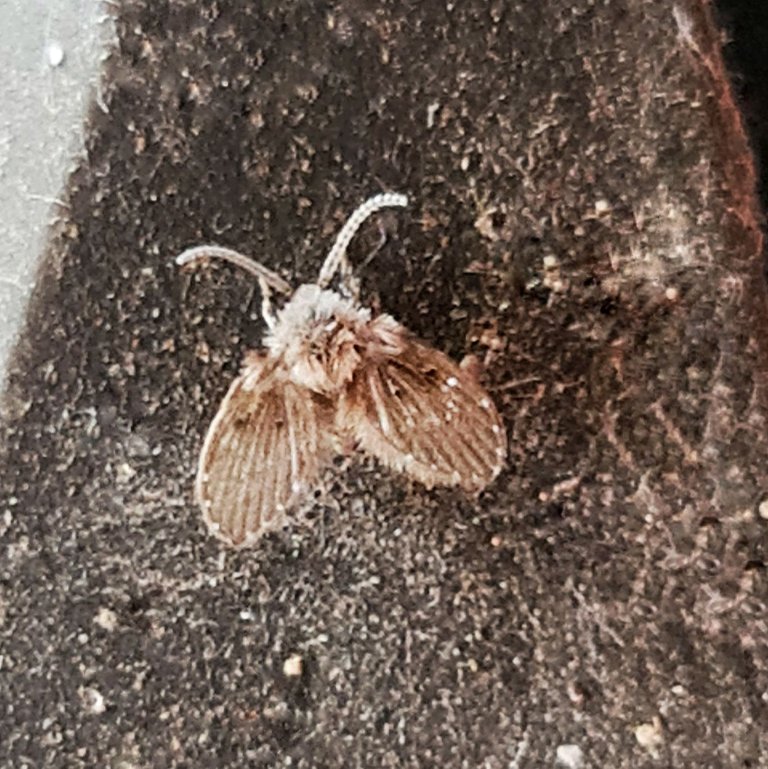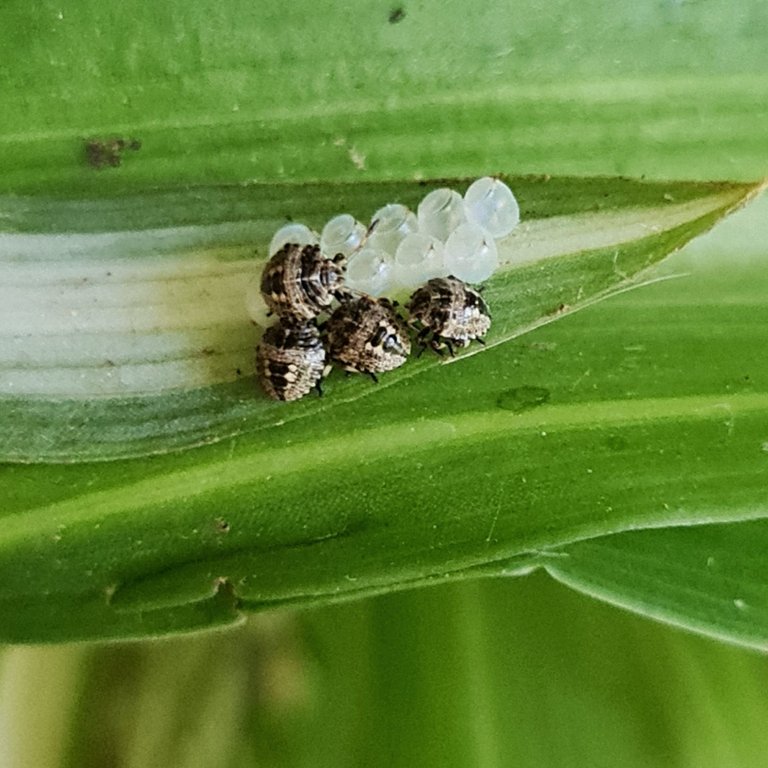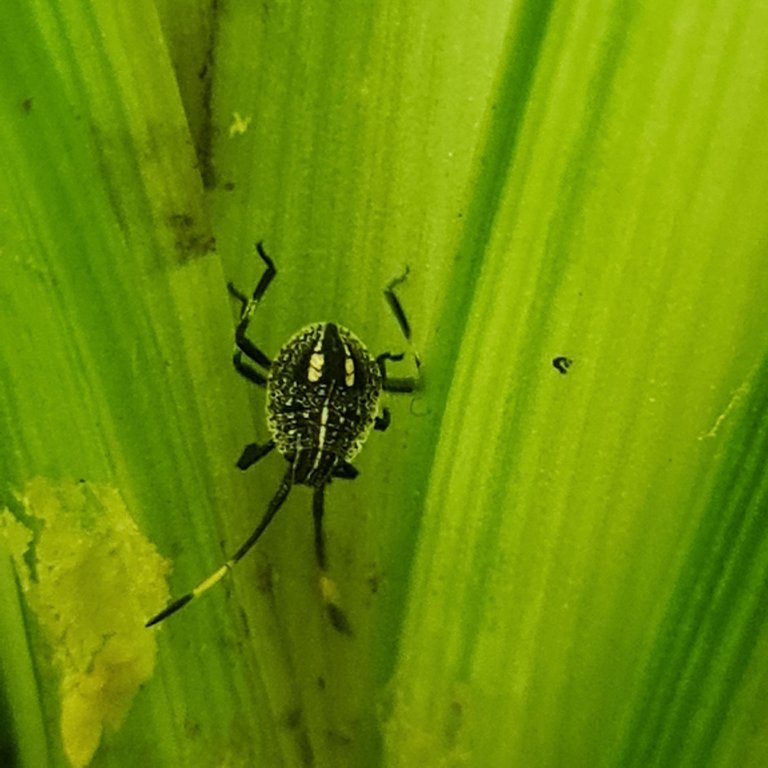The last month, with the change of seasons, has bought a whole crowd of new insect critters to Ligaya Garden, so I thought I'd share some pics of them with you. On the local calendar, it's the transition between Parnati and Kudlilla, a time of winds and upcoming floods, indicated by the flowering of Kappi, the Wild Tobacco.
This post is quite image intensive, but I've put the name of the critter and a little description of them and what their role is in a biodiverse, pesticide free garden. Enjoy 😉

The first off the rank, in the pic above, is this raggedy little Moth. They're tiny and get confused for large Mosquitoes. They're a pest and they're plant species specific. That is, each species likes to munch on one type of plant. I've found a few of these near our Kangkong, so it's the one related to Convolvulus plants.We also frequently find them on the wall of our toilet, which is inside the house and a long way from the Kangkong. Go figure🤔


The next two pics are of a Cotton Bollworm Moth. I included the extra pic to show the habit they has of rapidly vibrating their wings when at rest. They're a pest, of course and despite being names 'Cotton Bollworm', their larvae live on a wide range of plants.

Next in the queue is a Variagated Ladybug. I don't have to tell you how good Ladybug larvae are at pest control. Shortly after I took this pic, this one mounted another for a bit of X-rated fun.

Then we have whay I'm pretty sure is a juvenile Cicada.

One more down the line and there's a Moth Fly. These are part of a huge Family also called Drain Flies. The name says it all. Some look like flies, some look a bit hairier, like this one doing a splendid impersonation of a brown moth.

This scary looking thing goes by the name of 'Stiletto Fly'. They're welcome here because they're effective predators. They're very handy because their larvae live in the soil where they munch on the larvae of other critters who spend their larval stage in the soil. It's not so easy to control pests in the soil without pesticides so these are particularly welcome.

Next is a fluke shot of an Ichneumon Wasp grabbing Grapevine Moth to take back to its hole where it will lay eggs in the caterpillar and seal it inside where the babies will eat the caterpillar in safety.

These little red guys and girls are the nymph stage (the first stage out of the eggs) of your everyday pest, the Green Vegetable Bug. Don't they look too cute to squish?

Our shiny friend in the pic above is a Flea Beetle. Check out the size of the upper legs on this one! The legs help them jump long distances when disturbed. Luckily, I caught this on one of my trap plants and squished it before it could move on to bigger and better things.

My little green friend is a Macrolophus. I love these little guys with their bug eyes that remind me of those on a Praying Mantis. They're both predator and pest, sucking plant juices when they're not eating other bugs.

About the size of three full stops is this tiny Orb Weaver. We usually think of Orb Weavers as those big squishy spiders that love torturing people by casting their webs across paths and sitting right in the centre, usually at our face level. But there are many tiny, tiny species and we have several doing pest control duty for us in the garden. This one was disturbed in our Spider Plants.

Palpita flegia , the Satin Moth is a well hidden and appropriately named Moth with wings of gossamer that disappear against the leaf surface. They like to rest on the underside of leaves, which makes them almost impossible to find unless, like me, you see one land. I don't know much about them but appreciate them for their beauty.

Here, a Striped Lynx Spider has just caught a fly. Another lucky pic!

The little cuties in the pic above are Eucalyptus Stink Bug nymphs, fresh from their eggs. The white things in the pic are their eggs. They're a pest unfortunately but I didn't have the heart to squish them. The pic below is one of their older brothers, still a juvenile though.


In the last pic, a Colonus Spider about to make a meal of a Mosquito in this pic. These little jumping spiders are always good for a laugh. We have 4 species on our garden that I'm sure of and possibly another 2.





